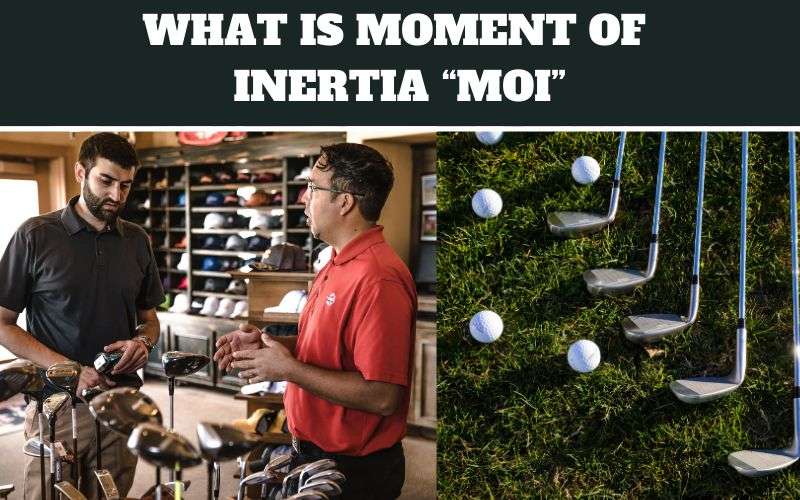Golf, often considered a game of precision and finesse, is heavily influenced by the design and technology of golf clubs. One key aspect that has gained prominence in recent years is the concept of Moment of Inertia (MOI).
MOI plays a pivotal role in club design, affecting a golfer’s ability to control shots and achieve consistent performance on the course. In this article, we’ll delve into what MOI is, why it matters in golf, and how it impacts your game.
Understanding Moment of Inertia (MOI) in Golf: Enhancing Performance through Club Design
Defining Moment of Inertia (MOI):
Moment of Inertia, in the context of golf, refers to the club’s resistance to twisting when it makes contact with the golf ball.
Put simply, it measures how forgiving a club is when you hit the ball off-center.
High MOI clubs are designed to reduce the negative effects of off-center hits, helping golfers maintain better accuracy and distance even when they don’t strike the ball perfectly on the sweet spot.
The Science Behind MOI:
When a golf ball is struck off-center (toward the toe or heel of the clubface), it can result in a phenomenon called “gear effect.” This means that the ball’s spin axis tilts, causing a hook or slice. A higher MOI in a golf club reduces this gear effect by providing greater stability to the clubhead during impact. In simpler terms, a higher MOI club is less likely to twist or rotate upon impact, resulting in straighter shots, consistent ball speed, and improved distance, even on mis-hits.
MOI and Club Design:
MOI is influenced by various factors in golf club design, including the clubhead’s shape, weight distribution, and size. Manufacturers strategically position weight within the clubhead to optimize MOI.
Perimeter weighting, a common design strategy, involves placing more weight around the edges of the clubhead. This redistributes mass away from the center and enhances MOI, making the club more forgiving.
Impact on Players:
MOI has a significant impact on golfers of all skill levels. Beginners and high-handicap players often struggle with consistent ball striking.
Clubs with higher MOI provide a larger “sweet spot,” allowing these players to achieve better results even when their shots are slightly off-center.
As players advance, the benefits of MOI continue to be valuable, as even skilled golfers occasionally mis-hit shots during rounds.
Balancing MOI with Feel:
While high MOI clubs offer forgiveness, there’s a balance to strike with the golfer’s feel and control. Some players prefer clubs with lower MOI, as they offer more workability and responsiveness. Advanced players who can consistently strike the center of the clubface might prioritize these factors over pure forgiveness.
Custom Fitting and MOI:
The concept of MOI emphasizes the importance of custom club fitting. Golfers have unique swings and tendencies, and a club’s MOI can be tailored to suit their needs. A professional club fitting can assess a player’s swing characteristics and recommend clubs with an appropriate MOI, maximizing performance and consistency.
Conclusion:
Moment of Inertia is a fundamental concept in golf club design that significantly influences a golfer’s performance. By enhancing forgiveness and reducing the negative effects of off-center hits, higher MOI clubs can lead to more consistent shots and improved scores.
Golfers, regardless of skill level, should consider the impact of MOI when selecting clubs and invest in custom fitting to optimize their game. As technology continues to advance, golfers can expect continued innovations that harness the power of MOI to elevate their performance on the course.

